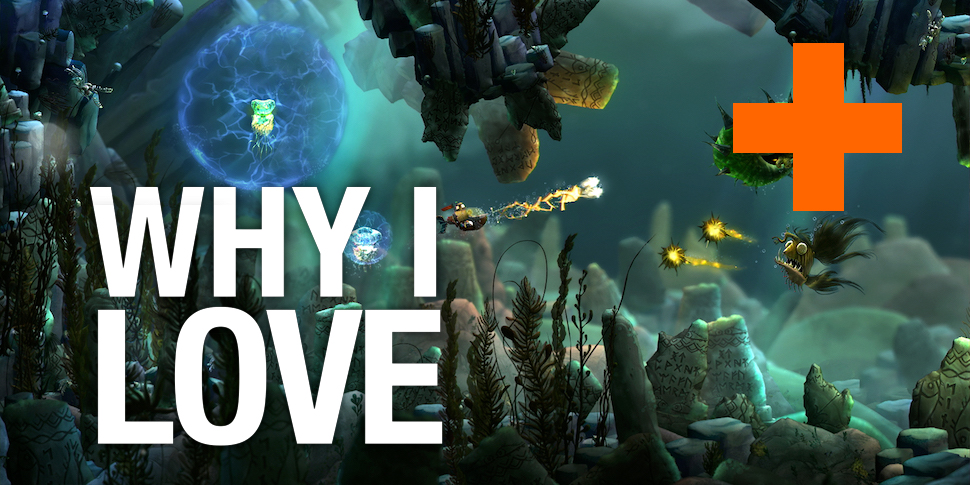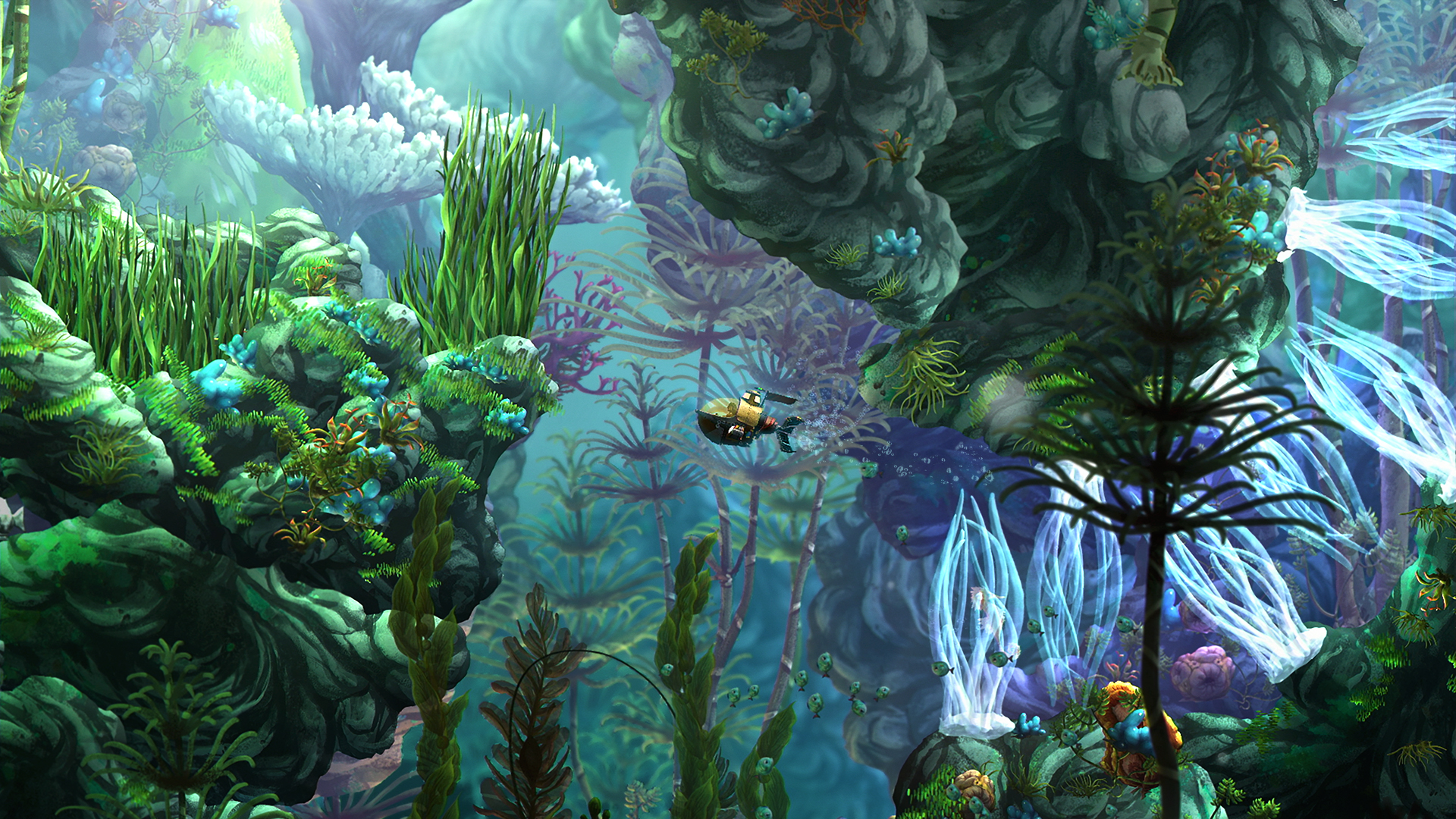Why I Love: Being underwater in Song of the Deep

Swimming is the only form of exercise I’m willing to do, because nothing about it really feels like exercising. Sunshine sparkling on the bright chlorine-blue of the pool. The shock of cold when I first jump in. Floating on the surface, weightless. Then, pushing off through the water, propelled like an arrow by just the power of my own limbs. It’s exhilarating.
It’s all about flow.
Water is probably the best naturally occurring example of flow. When I’m swimming laps, I have to force myself to stop. I’d rather stay in that steady rhythm of kicks and strokes until my muscles give out. It’s a happy place where even the intense physical activity feels like no work at all. It’s only the pressure of meeting deadlines (and the realization of how much pain I’ll be in the next day) that finally drags me out.
That’s the state I love to achieve in games: an immersion and focus and joy in what I’m doing. It’s a concept that has been targeted by scientists and artists alike, and there are many great examples of games attaining that goal. But the designers who also draw that connection between flow state and water in their creations will always get my attention.
So no, I don’t count those diabolical levels of Sonic or Donkey Kong Country when I’m talking about water games. They’re about precision, finding the most ideal path through an environment with harsh punishments if you fail. Not really a recipe for joyful focus. The water games I love are the ones that intend to create that sense of flow, of feeling both powerless and powerful.

I’ve been playing Song of the Deep this week. It’s the latest work from Insomniac Games, telling the story of a girl who builds a submarine to look for her lost father. The game is classic Metroidvania fare, a genre that usually leaves me cold. But put me in a submarine, chasing mermaids and getting treasure from giant clams, and I’m at least a little interested.
My first experience with the game was on the show floor at E3, a decidedly not calm or relaxing time. With the controller in my hand, though, I was miles away from the convention center, exploring undersea ruins and swimming past glowing seaweed. Now, playing it from the comfort of my own couch, it’s easy to sink in a couple hours and, just like when swimming laps, wonder how the time disappeared so quickly. Where I’m normally stressed out by the need to loop back to already-cleared rooms in Metroidvanias, in Song of the Deep it was just a chance to keep that flow going.
Sign up to the GamesRadar+ Newsletter
Weekly digests, tales from the communities you love, and more
There’s even something satisfying in Song’s water physics, in the little bit of extra momentum that carries the sub a touch farther than I want it to go. So many games are designed to have hair-trigger responsiveness. Usually a player wants, if not needs, the immediacy on solid ground. Underwater, though, that small touch of inaccuracy helps create some magic.
And magic is what I want. If I’m playing a game for flow, I want to leave behind all the things that trouble me in the real world and be transported somewhere else. I want to leave the surface and lose myself, mentally and physically, in some place where all that matters is the sequence of actions and the inevitable rush of water.
A tall order, to be sure. But with the right setting and just a few well-executed details, a game can easily sweep you along with the current.
Why I Love encapsulates all the little details of gaming life that sometimes get ignored. It arrives every Friday at 0900 PST / 1700 GMT. Follow @gamesradar on Twitter for updates.

Anna is a freelance writer who has written for the likes of GamesRadar, Ars Technica, Blizzard Watch, and Mashable. She's also created games as part of various game jams. Anna likes games about solving puzzles and/or shooting things. She wishes she could trade zingers with GLaDOS and have beers with Garrus Vakarian in real life.


